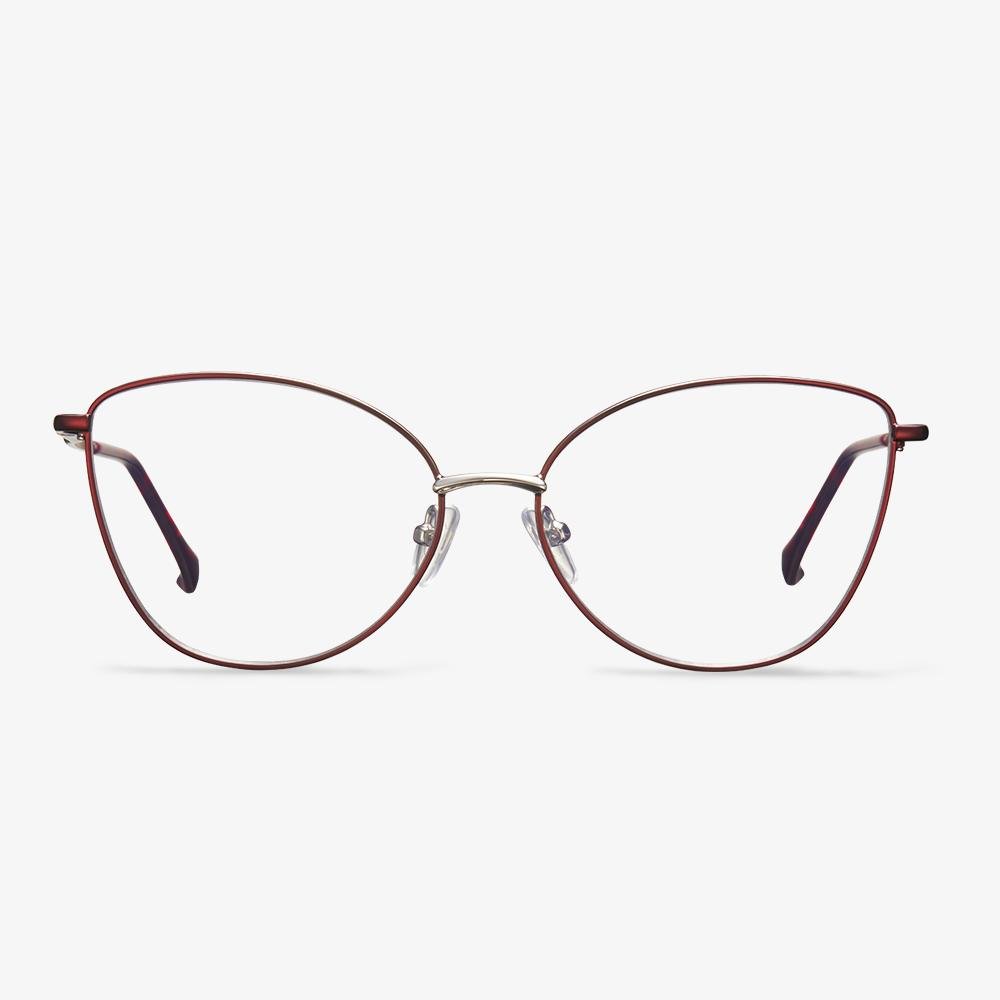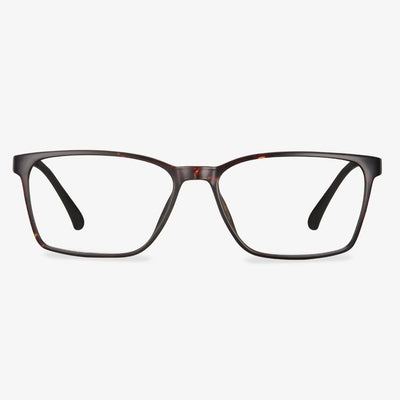Single Vision vs Progressive: What Are Their Differences
In this part, we will show you some differences between single vision and progressive lenses. They differ in several factors, so here we will compare them one by one.
Progressive lenses generally have their reading zones just in the lower half of the lenses, while single vision glasses have the reading power all over the lens. So if you are working on something above your head and you need to see some small details, the progressive lenses will not work. And you can not see through the reading zone in progressive you need to switch to single vision reading glasses.
Single vision glasses are cheap than progressive lenses. Compared to progressive glasses, single vision glasses hold way fewer distortions in the periphery. So, there is no need to customize the lens design to the max. In addition, single vision glasses are often available in the optical store while the progressive often needs to be produced for you. In other words, the delivery time of single vision lenses will be shorter for you.
You can use your progressive glasses optimally just in an upright posture. As soon as you lay down on your couch, this will lead to blurry vision. The reason is your changed position which forces you to look lower through the lenses on the screen. However, with single vision glasses, you can change to an upright position and it would not be a problem anymore. You can position yourself on your couch as comfortably as you want and you can still see clearly with your single vision distance glasses.
Step-by-Step Glasses Size Guide
In this section, we will show you how to perform glasses measurements. But the first thing is to know what face shape you have. If you do not know, click here to have a check.
Then you need to know where to find the size measurement of your glasses. In general, you will find numbers that look like this 51-17-145 at the temples of your eyeglasses. Of course, these numbers come at different meanings.
The first number often refers to the lens width. Lens width is the horizontal diameter of the lens at its widest point. In optometry, another term is eye size.
The second number often means the bridge width. Bridge width is the part that joins the two lenses and sits over the nose. Some refer to this as the gap. The bridge width varies between 14 and 24 millimeters.
The third number often means the temple length. The temple is the arm that keeps the sunglasses on your face. That arm extends to the part that hangs on the ears. The length is usually 135, 140, or 145 millimeters.
Lens height measures the size of the lens vertically, that is from the top to the bottom of the lens. Although sizes may differ depending on the brand, the standard size is somewhere between 32 and 38 millimeters.
Seek adjustment in stores
It occurs redness and pain in the ear area. It could be that the structure of the glasses and position doesn't suit your face shape. When you're in an optician's shop, ask an optician for help in adjusting your glasses or changing the frames. Think about if the frames fit or are a little heavy. Suggest you can change to another pair. You should try a suitable and not heavy frame. You go back to the eyewear store and ask a professional to shape your frame in accordance with the outline of your ears again carefully. If you feel a little uncomfortable when you try it on, adjust it.
What Is Trivex Lens?
Trivex is another light, impact-resistant eyeglasses lenses. Like polycarbonate lens, Trivex is an excellent lens material for safety applications and children’s eyewear.
Trivex lenses are made of a urethane-based monomer. They are produced using a slower, cast molding process similar to how regular plastic lenses are made. The liquid lens material is slowly baked until is set. This gives Trivex lenses the advantages of sharper optics than injection-molded polycarbonate lenses.
How to Keep Glasses from Slipping
Stick-on Nose Pads
Nose pads would be a good choice to prevent glasses to slide down your nose. Hence, you can stick a pair of rubber pieces in the nose pads of your glasses or you can choose a pair of glasses with rubberized nose pads. If you want to try a pair of nose pads glasses, the Koalaeye Optical may be a good choice. The rubber nose pads will make you feel steadier and better and the additional resistance on the nose pad will surely provide more support. So, if your glasses often slip down from your nose, try this way.
Wax Coating
To keep glasses from slipping, you can try wax coating which is a smart move. Use the wax on your nose pad area along with the temple where the glasses come into contact with the skin. In general, it works fine and it is nearly invisible.
Temple Ear Hook
The temple ear hook is a good way to keep glasses from slipping. It can provide mechanical support behind the ear and you will feel the support from the back of your ears. But the drawback of the temple ear hook is that it is quite visible. When you take off the lenses, you need to lift the temple higher so that the ear hook could clear the ear’s crest. Besides, the cheaper one might cause some discomfort to the back of your ears because of the pressure.
Rubber Bands and Hair Ties
To keep glasses from slipping, you can also try hair ties and rubber bands. You can tie one around the temple tip behind your ear so that it can provide both slight mechanical support and friction forbidding your glasses from moving around. What’s more, this is a low-cost method.
Memory Titanium Flexible Full flex
These glasses have a titanium alloy (non-pure titanium) fully curved glasses frame and have acetate coating at the end. With aviation style, the latest fashion design is used, they are not heavy in weight. The frame is not heavy and flexible. It just needs a little tweaking. They are not heavy at all. Wearing them for hours doesn't cause stress headaches. The glasses can be adapted to informal moments like weekend brunches, or significant occasions, for example, at high-level business meetings. It's made of impressively flexible titanium, and you can twist the temple in each way you want.
Why do blue light glasses turn yellow?
The glasses are used for a long time. Blue lenses are usually light yellow. If the yellow is too deep, the resin lenses will oxidize and become yellow due to the long-wearing time. The lenses need to be replaced in time. Yellowing of the lens is related to the excessive secretion of facial grease, which leads to yellowing of the lens. The most direct way is to replace the lens glass.


















































